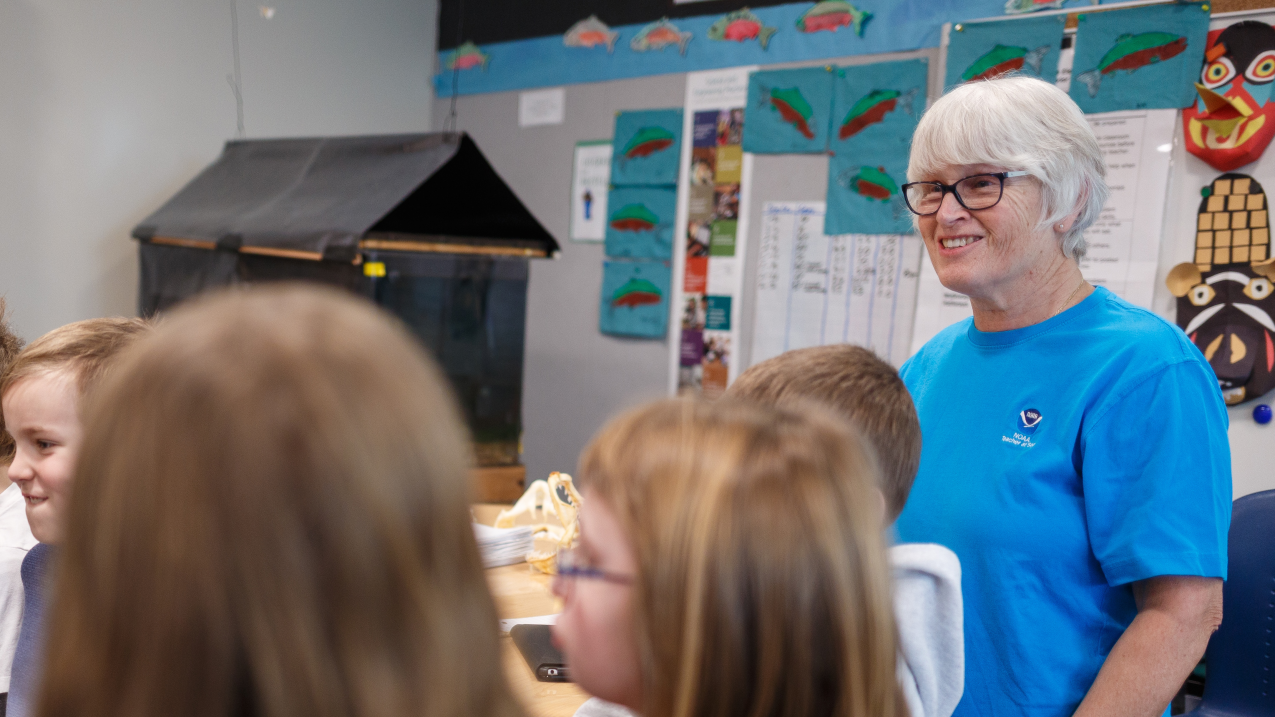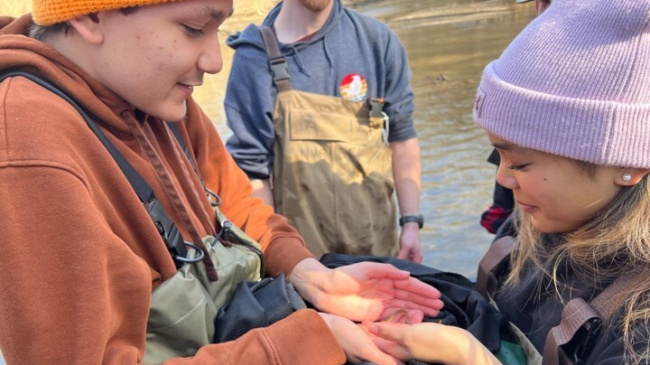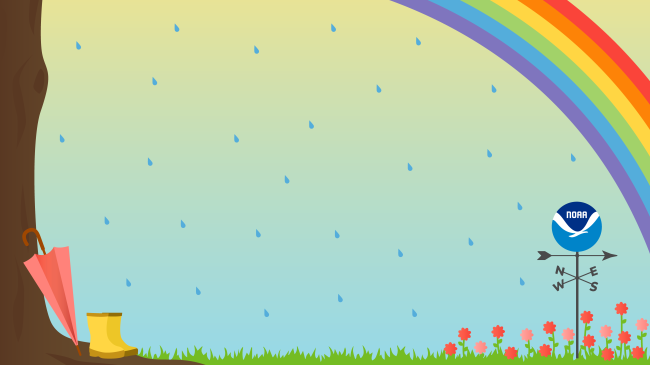Sharpen your pencils and pack your backpack. We’re taking you on a whirlwind tour of NOAA Education.
NOAA supports teachers and students as they head back to school. Here’s a roundup of resources that will bring NOAA science into your classroom. We’ll be adding to this list throughout the month of August, so stay tuned!

Fourth-grade educator and NOAA Teacher at Sea alumna, Barney Peterson, makes an impact in her classroom. (Image credit: NOAA Teacher at Sea Program)
1. Take advantage of our timely resources.
Did you know that 2018 is the International Year of the Reef? We have resources to help you teach about coral ecosystems. If you have access to a 3D printer, you can even print and design your own coral polyp.
Reducing plastic pollution is another hot topic this year, and was a theme for both Earth Day and World Oceans Day. Keep the momentum going by teaching about marine debris throughout the year.
August is a month of data celebration and data discovery at NOAA. We updated our data resources for educators just in time for the start of a new term.
Many states have adopted the Next Generation Science Standards offsite link (NGSS) or other standards built around the “three-dimensional learning” framework offsite link. Here’s a collection of NOAA resources that support NGSS and related science standards.
2. Share opportunities and activities with your students.
We have sites just for kids, including Games@NOAA, Owlie Sykwarn, and SciJinks. You can also explore our list of opportunities for students for experiences that will take them from kindergarten through graduate school and beyond.
3. Keep learning science.
Our ocean and atmosphere experts are excited to share what they know about the world. Here are some ways to learn about NOAA science so you can stay informed and inspired all year long.
Want to bring the experts right to your desktop? Register for NOAA’s webinars for educators. We offer ongoing series on ocean exploration, national marine sanctuaries, ocean acidification, and the full gamut of ocean, climate, and atmospheric science.
Need to understand the hows and whys of weather? Go back to class with Jetstream, the National Weather Service’s online school for weather. You can also check out the Weather Basics video series from the National Weather Service forecast office in El Paso, Texas.
Craving more marine science media in your classroom? Stay in the know by watching the award-winning NOAA Ocean Today videos, with new collections out every full moon. Follow along as NOAA Ship Okeanos Explorer beams live footage up from the deep ocean. You can also listen to the NOAA Ocean Podcast to explore topics from corals to coastal science.
Looking for some bite-size facts? Check out Delaware Sea Grant’s 15 Second Science offsite link with episodes in English and Spanish. Get all of your marine questions answered with Ocean Facts from the National Ocean Service.
We also offer a host of other opportunities for educators, including funding and in-person workshops.
4. Teach about phenomena that will make your students say “wow!”
Have you seen a sundog, a glory, or a snow roller? Ever witness a haboob, a heat burst, or a water spout? Read up on strange and surprising spectacles on Owlie Skywarn’s list of weird weather.
You’d be amazed at what NOAA Teachers at Sea encounter during their voyages on our research vessels. Follow their adventures on the Teacher at Sea blog and check out the photo of the week for a window into wild and wonderful life on the high seas.
If you want to see the big picture, you can marvel at the Earth from space with NOAA’s satellite image of the day. Follow major events like hurricanes, volcanic eruptions, and wildfires as they unfold or simply appreciate places so beautiful they blur the line between Earth and art.
5. Get ideas for science projects.
Engage your students in projects like NOAA’s Adopt a Drifter program, in which schools can track buoys as they float around the ocean collecting data.
Classrooms can also participate in citizen science projects. For example, your school could set up a rain gauge and record local conditions while contributing valuable data to the Community Collaborative Rain, Hail and Snow (CoCoRaHS offsite link) network.
You’ll find plenty of ideas for projects in our activity books, Discover Your World With NOAA and Discover Your Changing World With NOAA, as well as our hands-on science activities resource collection. Or try some hair-raising lightning experiments!
6. Join the #BackToSchool community online.
The National Weather Service has been promoting back-to-school resources on Twitter and Facebook since July. NOAA Digital Coast is sharing an assortment of resources for educators and environmental professionals. The #Teach4Climate campaign from Climate.gov and partners inspires teachers to prepare students to be part of the solution to climate change.
And of course be sure to follow #BackToSchoolNOAA and NOAA Education on Facebook, Twitter, and Instagram for all your back-to-school needs.
7. Explore our educational websites.
Last but certainly not least, we invite your to explore our many websites that were designed specifically for educators. NOAA Education is your hub for connecting with resources.



